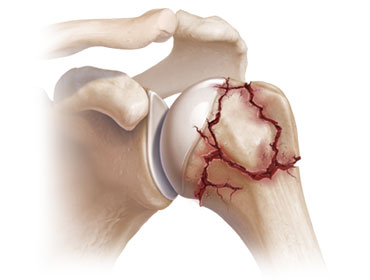Proximal Humeral Fractures
Proximal humeral fractures are particularly common in the elderly. A few people have axillary nerve or artery injury (which reduces sensation across the middle deltoid). Contractures can form after just a few days of immobilisation, especially in the elderly.
Most of these fractures result from a fall on an outstretched arm; less often, a direct blow is involved.
One- and 2-part fractures of the proximal humerus
If no structures are displaced or angulated, the fracture has one part. If one structure is angulated or displaced, the fracture has 2 parts.
Symptoms
The shoulder and upper arm are painful and swollen; patients have difficulty raising their arm.
Treatment:
- A sling and early range-of-motion exercises are usually used.
- Open reduction with internal fixation (ORIF) or prosthetic joint replacement are sometimes used.
Immobilization in a sling, occasionally with a swath (see figure Joint immobilisation as acute treatment: Some commonly used procedures ), and early range-of-motion exercises, such as Codman exercises, are used to treat one-part fractures. These workouts are very beneficial for seniors. Because contractures can occur, it's best to mobilise as soon as possible, even if the alignment isn't perfect
- Classify proximal humeral fractures according to the number of displaced or angulated key humeral features (anatomic neck, surgical neck, larger tuberosity, lesser tuberosity).
- Almost all of them merely need a sling.
- Patients, especially those over the age of 60, should begin range-of-motion exercises as soon as possible.

